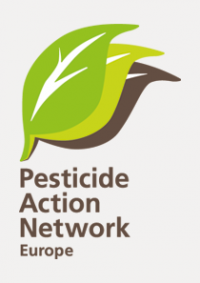27/05/2024, Brussels - A joint research by the European Pesticide Action Network (PAN Europe) and its members revealed a sharp increase in the contamination of European fruit and vegetables with pesticides from the problematic chemical group of PFAS, also known as 'forever chemicals'. We now focus on their terminal degradation product, the highly persistent chemical trifluoroacetic acid (TFA). We analysed 23 surface water and six groundwater samples from ten EU countries for TFA residues and other PFAS. The extent of the contamination is alarming and calls for decisive action. The key findings are:
A) All water samples analysed contained PFAS. More than 98 per cent of the total PFAS detected were TFA, a known degradation product of PFAS pesticides and other PFAS.
B) 79% of the samples had TFA levels exceeding the proposed1 EU Drinking Water Directive limit of 500 ng/l (nanograms per litre) for total ‘PFAS’.
C) None of the other 23 PFAS analysed in this study exceed their respective limits proposed2 in the EU Drinking Water Directive.
D) The detected TFA levels ranged from 370 ng/l to 3,300 ng/l with an average of 1,180 ng/l. The average level of the sum of all other 23 PFAS together was 17.5 ng/l.
E) The TFA levels found in surface and groundwater represent the largest known area-wide water contamination by a manmade chemical.
F) PFAS pesticides appear to be the main cause of water contamination with TFA in rural areas, followed by refrigerants, sewage treatment and industrial pollution.
G) The regrettable categorisation of TFA as a ‘non-relevant’ metabolite under the EU Pesticide Regulation has hindered effective groundwater protection in the EU.
H) The EU Water Framework Directive's 'prohibition of deterioration' should have prevented decades of escalating TFA pollution, yet it has failed to do so.
I) The narrative that short-chain PFAS (like TFA) are harmless originates from the PFAS manufacturing industry but is increasingly challenged by current scientific evidence.
J) Growing resistance from the largest political group in the European Parliament is threatening the proposed group ban on PFAS.
The extent of this contamination is shocking. It is a result of political failure at many levels. What is needed now is swift and decisive action, including: (i) a rapid ban on PFAS pesticides by considering persistence of a synthetic active substance or that of its metabolites as an unacceptable effect on the environment, (ii) the implementation of the new Persistent, Mobile and Toxic (PMT) and very Persistent and very Mobile (vPvM) hazard classes under the EU Pesticide Regulation, (iii) the implementation of the general PFAS restriction under the REACH Chemicals Regulation, (iv) the categorisation of TFA as a 'priority substance' under the Water Framework Directive, and (v) monitoring obligations and limit values for TFA.
